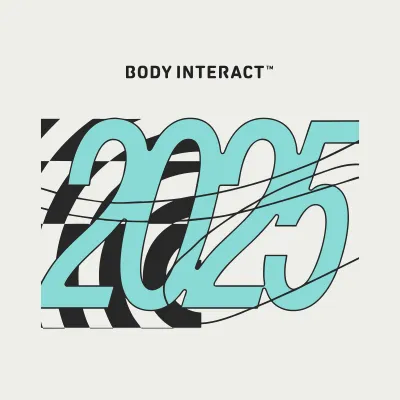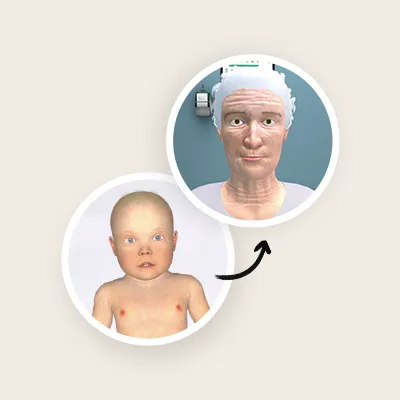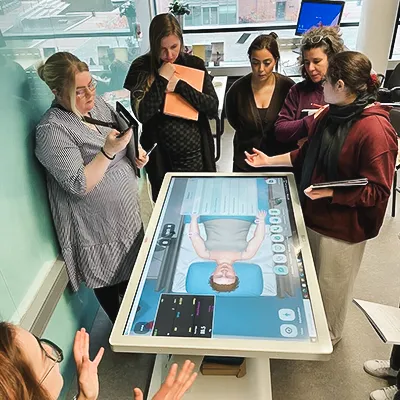
Professor Lulu Sherif, who is presently heading the Father Muller Simulation and Skill Center, in Mangalore, India, along with her simulation educators and undergraduates from the Medical and Nursing disciplines, had the opportunity to conduct a study with Body Interact, the Virtual Patient Simulator, under a distance simulation context.
What you are about to read are some of the inputs and perspectives of Professor Lulu Sherif who kindly accepted our request for an interview regarding the institution and her personal experience of using Body Interact.
Learn with Virtual Patients
Benefits for teachers and institutions
1. Distance Simulation / Remote Learning
Body Interact proved to be useful in the context of remote learning imposed by the COVID-19 lockdown. Especially to continue teaching and assessing the various topics in the medical and nursing sub-specialties.
2. Assessment of higher-order thinking skills
Assessing the critical thinking skills within a clinical context, like the clinical reasoning and decision-making skills of the cognitive domains, which are often challenging to assess and are usually overlooked when students perform procedural skills at the skills center, was made possible with Body Interact.
2. Standardization
The availability of standardized Body Interact clinical scenarios used by faculty members or students, within a teaching or assessment context, proved to be very vital during the multiple sessions conducted by various educators for different cohorts of students.

Constraints to using Body Interact and suggested ways to overcome them
“The language was a constraint”, mentioned Professor Lulu Sherif, as the communication with patients in the scenarios was not as per the regional linguistic expressions, pronunciation, and accent. Although she did express that it would be complicated to adjust to this demand as in her area, there are more than half a dozen local languages spoken by patients and the use of an interpreter is a routine.
To overcome this issue, Professor Lulu Sherif and her faculty suppressed the communication section of the Body Interact interface from the goals during their experience and assessed the communication manually outside of the Virtual Patient Simulator, as this skill is an integral part of a clinical encounter.
Finally, Professor Lulu Sherif added that as a routine, the faculty provide pre-simulation reading resources for students to prepare them with the key theoretical concepts required for the immersive simulation session. The Learning Management System of Body Interact makes available for teachers a series of resources that may be useful for the faculty as a part of their session preparation and as a teaching aid for that specific clinical scenario.
5 Tips for new teachers who would like to implement and start using Body Interact
Although Body Interact is considered globally by faculty and students as an easy-to-use software, tips from educators who have used Body Interact are always welcome. And Professor Lulu Sherif and her team have mentioned a few below:
- Faculty Training and Student orientation on how to use Body Interact
- Faculty need to perform hands-on training with the interface in the presence of Body Interact staff – an immersive experience
- Deliberate Practice after the initial training, so that the faculty is competent with the interface settings – what each icon signifies, how to manage and control the simulation scenarios, how to access and collate the data provided by the feedback collecting system, etc.
- A good Internet connection is crucial for loading and running the scenarios
- Preparation by the Faculty with regard to scenario progression and expected clinical outcomes is vital for achieving the learning objectives
Body Interact can be used straight from the web provided there is a stable internet connection, otherwise, it is recommended that users download the software to their devices, for a smooth experience.
Although the approach for this particular experience was the one guided by the faculty, when questioned about her ideas on using Body Interact as a remote learning/distance simulation tool in a different setting, such as in a tutored approach and/or in a standalone manner, Professor Lulu commented that she could see the standalone approach acceptable. For example, having a blended methodology in which students performed the asynchronous part by themselves using Body Interact followed by the faculty engaging them in a live synchronous debriefing.
Daniela Abreu – Body Interact Instructional Designer









